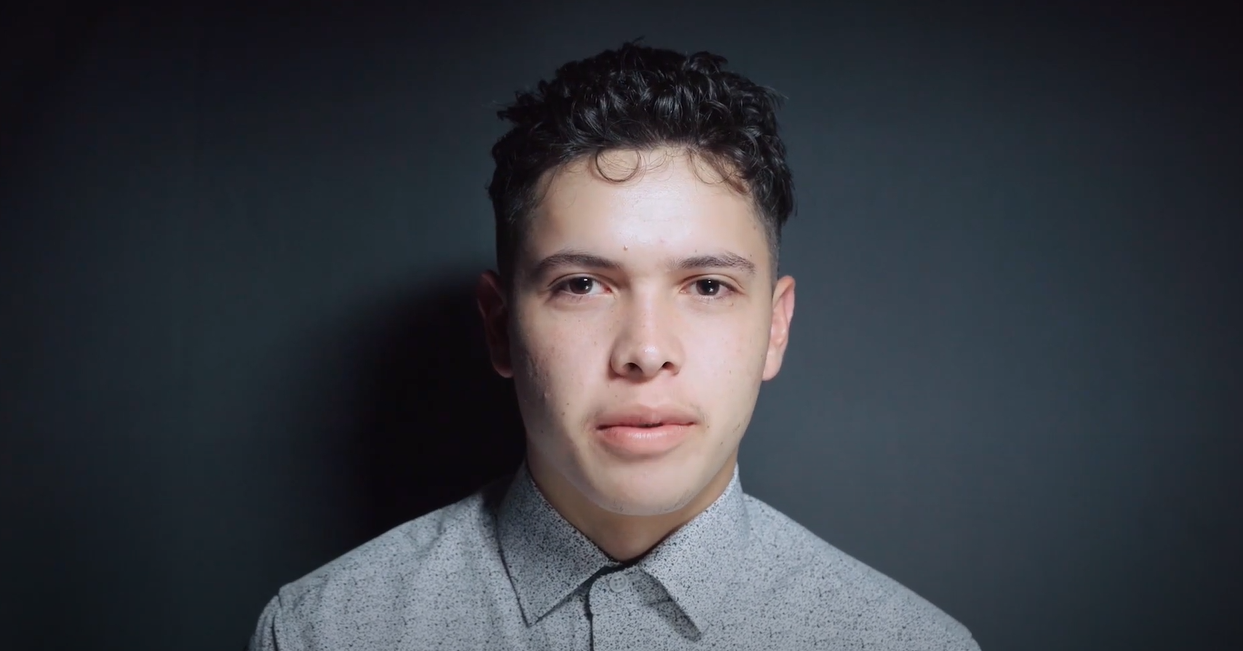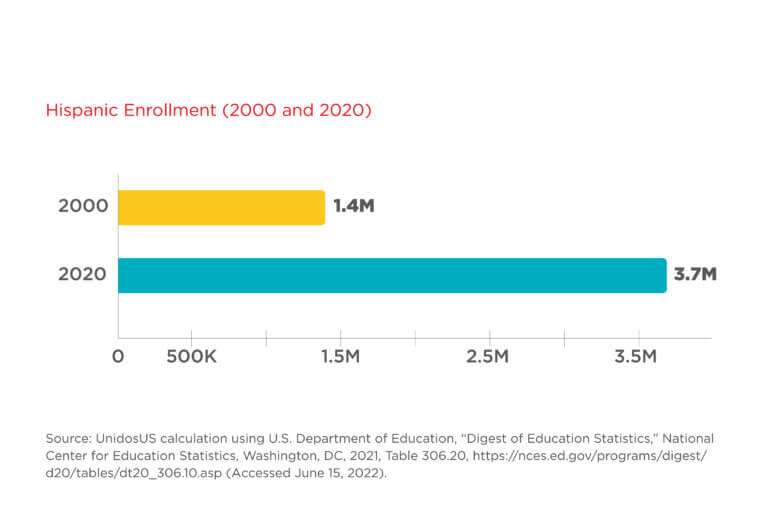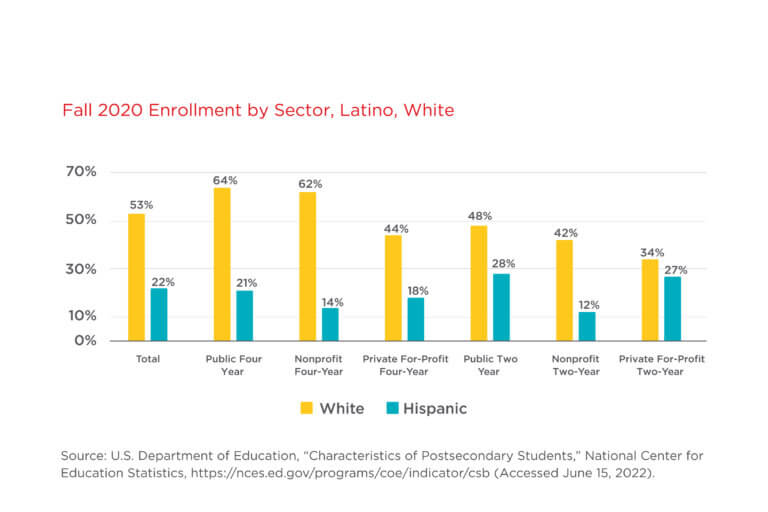Higher Education
UnidosUS advocates for policies and programs that support better outcomes for Latinos in postsecondary education.
Latinx Student Enrollment
Latinx Student Retention & Completion
Latinx Student Debt
Latinx Student Enrollment (2nd Row)
50%
Most Latino students are of Mexican or Puerto Rican descent. In 2015-16, half of all Latino students were Mexican, Mexican American, or Chicano descent (50%), while 26% were of other Hispanic descent, 12% were of Puerto Rican descent, 8% were of mixed Hispanic origin, and 4% were of Cuban descent.
427,000
Undocumented students account for 2% of all students in higher education in the U.S., composed of more than 427,000 students. 48.5% of these students are Latino.
Latinx Undergraduate Students
Play video in lightboxCOVID-19 Pandemic Impact on Enrollment:
While we saw steep declines in enrollment in 2020 and 2021 due to COVID-19, enrollment in 2022 seems to be stabilizing. Recent undergraduate enrollment changes from Fall 2020 to Fall 2022 show diverging trends across racial and ethnic groups, with Latino enrollment showing a slight increase.
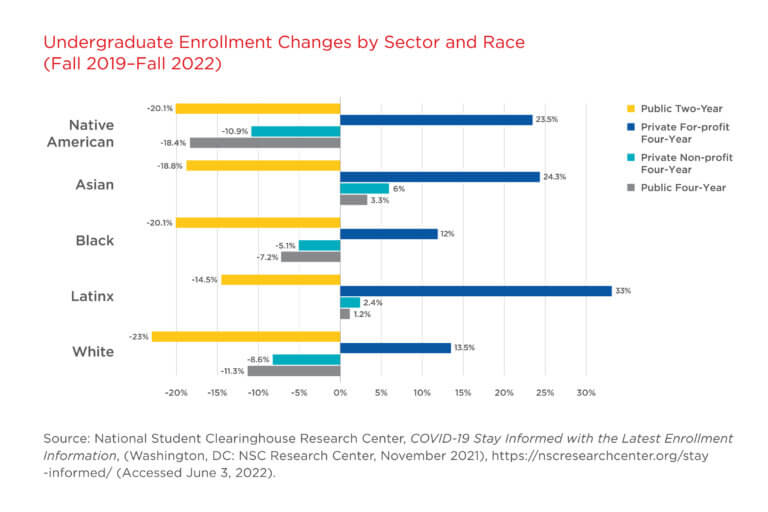
Latinx Student Retention & Completion
Play video in lightboxWhile Latinos are enrolling in postsecondary education at high rates, our community still has a significant way to go in increasing our overall degree attainment.
Roughly 37% of Latinos between the ages of 25 – 29 held an associates degree compared to 56% of white adults. And 25% of Latino adults held a Bachelor’s degree compared to 45% of white adults.
In 2019-2020, Latinos represented the second largest group earning certificates or degrees. Latinos represented 17% of all students earning degrees, compared to white (51%), Black (11%), Asian (6%), and other (14%) students.
Completion Rate Charts
Six years after entering college in 2015, 44% of Black students and 51% of Latinx students had completed degrees compared to 69% of white students—a completion gap of more than 18 points.
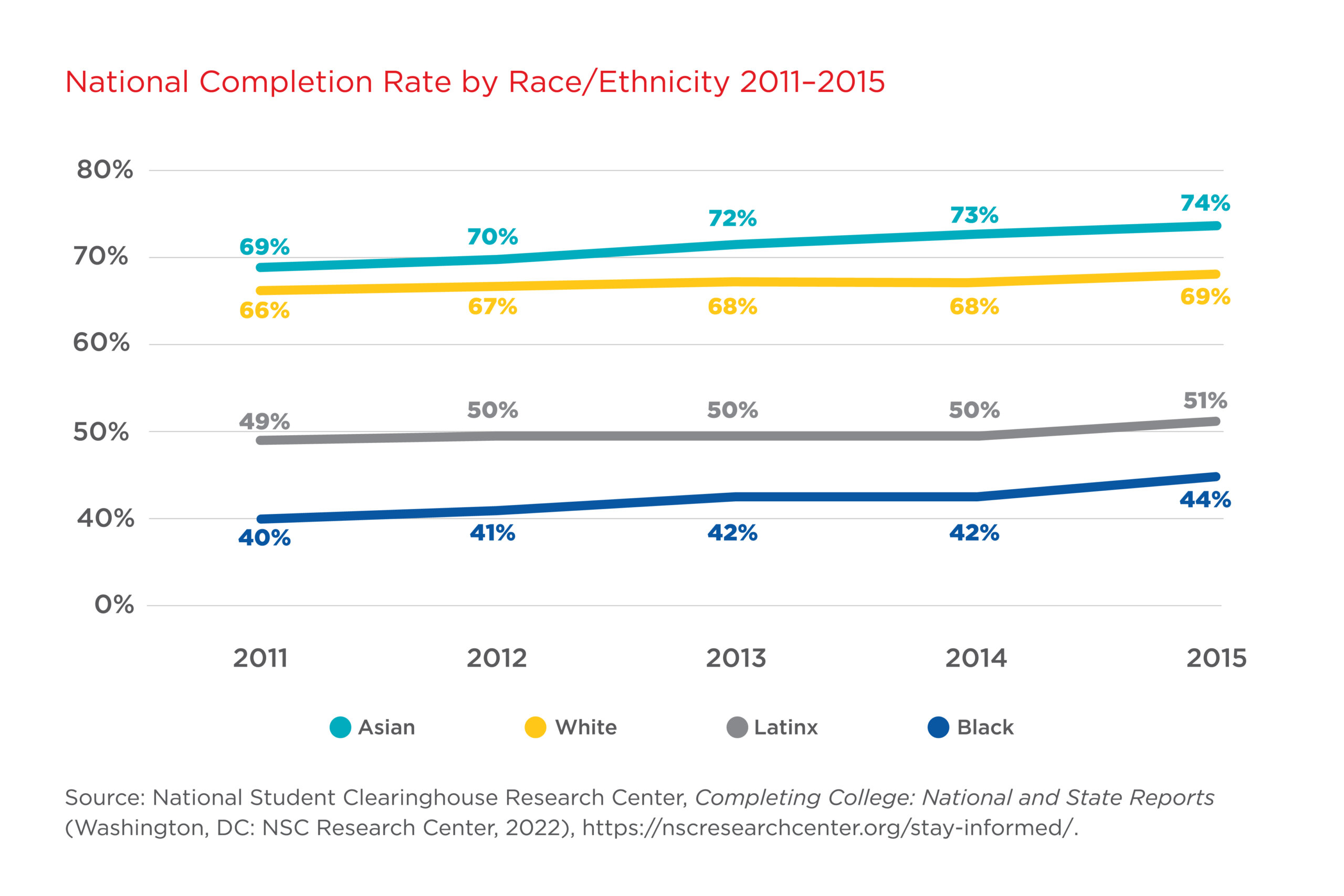
The college completion picture gets more nuanced when looking at completion rates at two- and four-year institutions by public, private nonprofit, and for-profit status.
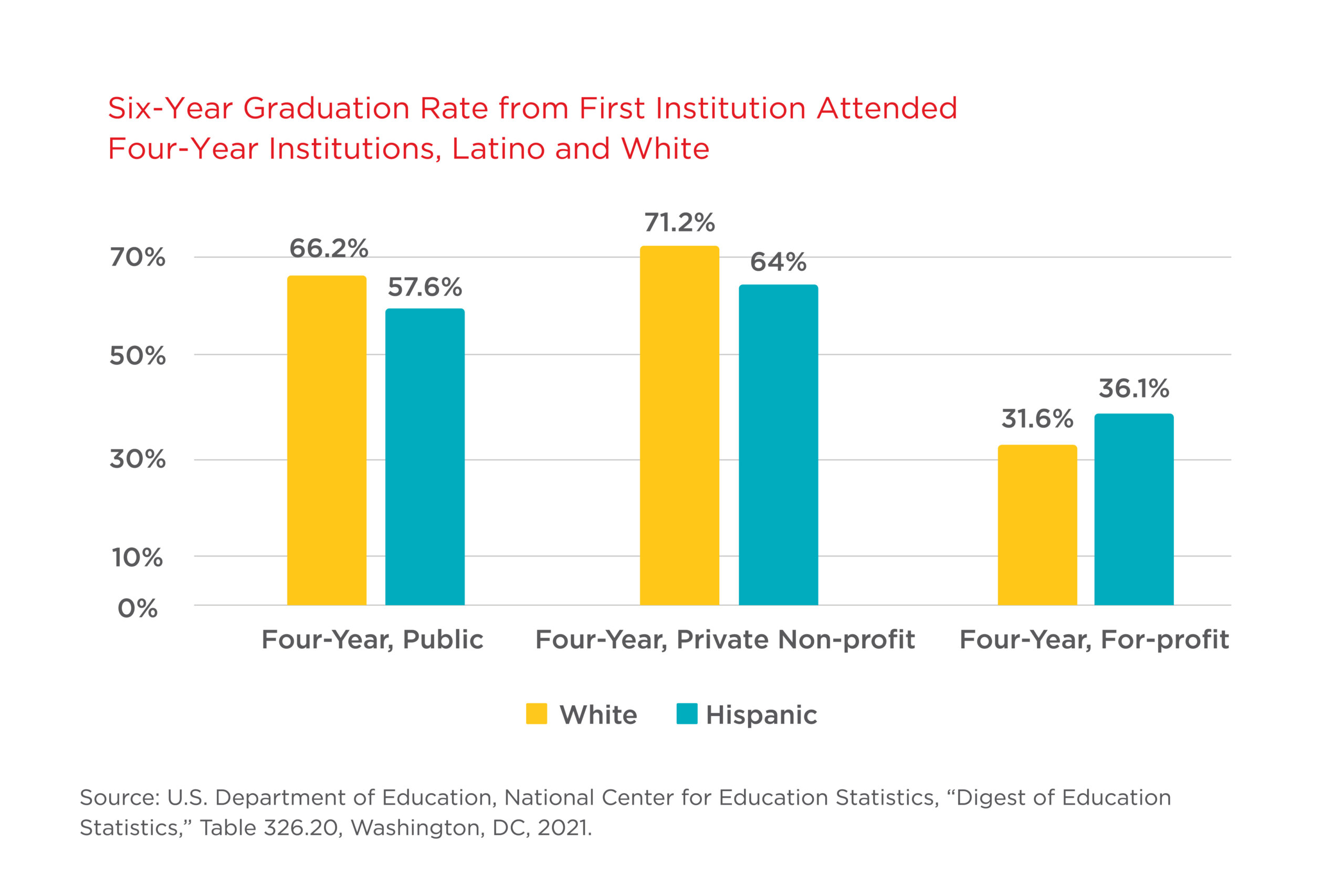
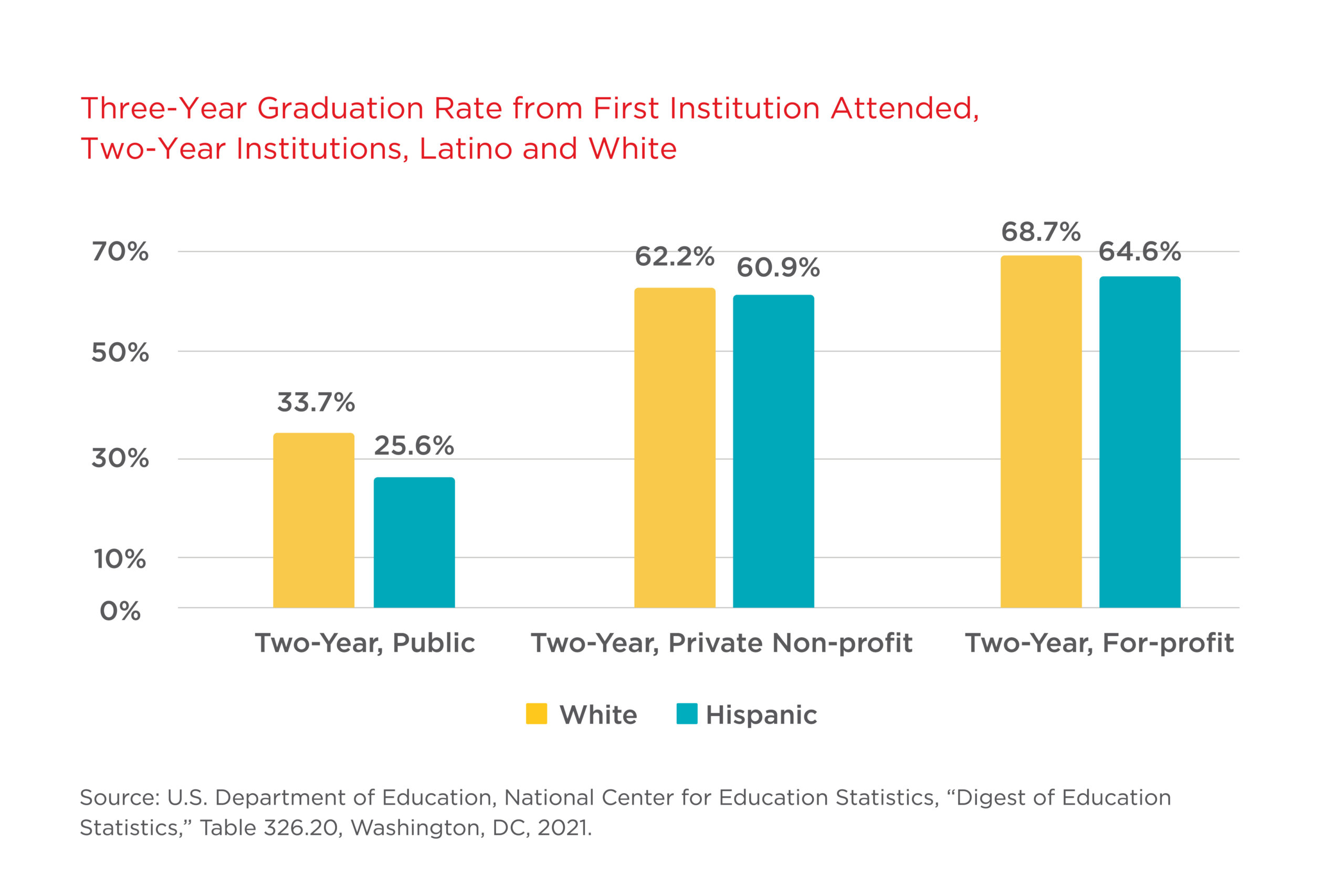
Me being the first one in my family, there was not a lot of guidance. I had to figure out everything and try to translate that for my parents. It was complicated, choosing a university. I wish I had help to …really think through it.” — Student in Minnesota, Following Their Dreams
Latinx Student Debt
Twelve years after starting college, 36% of Latino borrowers owed more than they originally borrowed.
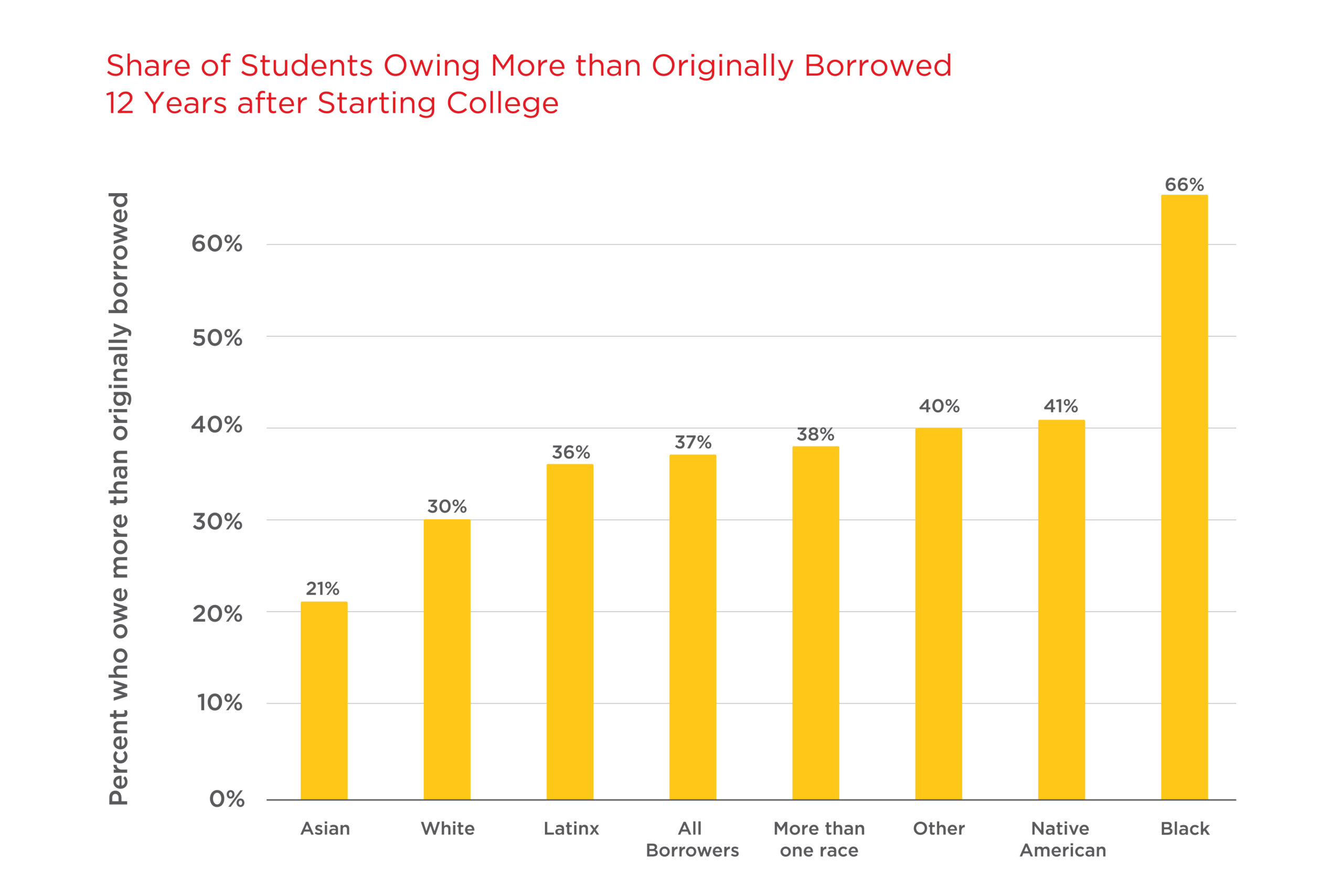
I just don’t like owing people money. I really don’t. It just gives me anxiety … I’m kind of a prideful person. … I would just get another job or work more hours. … Money is a tricky thing. You work hard for it, so if I can work, I’m going to work. I’m not going to try to … No. It’s very unsettling for me trying to owe somebody. It’s very unsettling.” — Sofia, Dreams Interrupted
Latino borrowers default at rates higher than their white peers. In the same cohort, Latino default rates varied by institution sector but were highest at for-profit colleges (57%) and lowest at non-profit (8%) and public institutions (35%). Factors impacting Latinos’ high default rates include challenges attaining their degree, lower earnings once they enter the workforce, and inadequate student loan counseling and servicing.
It was 100% the money … I did get into my dream school, but I’m considered an international student [because of my immigration status]. They didn’t give me any money and that broke my heart. I worked so hard. I could take out private loans, but I don’t know how long I’m even going to be able to stay in the country.” — Student in Minnesota, Following Their Dreams
Publications & Resources
- Factsheets (series of 6): Latino Policy Priorities for Reauthorization of the Higher Education Reauthorization Act (Sept 2019) – access, accountability, college completion, rising cost, student borrower, and teacher diversification
- Report: Following Their Dreams in an Inequitable System: Latino Students Share Their College Experience (August 2020)
- Factsheet: National Higher Education (Sept 2020)
- Policy Agenda: A Path Forward for Latinos: Laying the Groundwork for Equity in Higher Education (December 2020)
- Examples of Student Success Programs for Latinx Students (August 2021). This resource outlines institutional evidence-based programs targeted at Latinx students at two-and four-year colleges and universities.
- Supporting Latinos in Higher Education: Priorities for Reconciliation (September 2021)
- Dreams Interrupted: A Mixed-Methods Study Assessing Latino College Completion (September 2021) – a qualitative companion to the quantitative findings of the report “Debt, Doubt, and Dreams: Understanding the Latino College Completion Gap,” providing a more compelling understanding of Latinos’ hesitancy to take on educational debt.
- Executive Summary
- Factsheet: Latino Trends in Higher Education (July 2022) – In this fact sheet, UnidosUS provides an update on Latino higher education trends two years into the pandemic.
- Topic Brief: Supreme Court Ruling Must Lead to Action to Advance Opportunity in Postsecondary Education: Equity in Access to Higher Education Is—and Should Remain—a Core Value (July 2023)
- Survey: Latinos and Higher Education Survey (October 2024)
Subscribe for updates
Stay updated with the latest trends in education with UnidosUS’s scholarly publications, insightful articles, and educational webinars!


